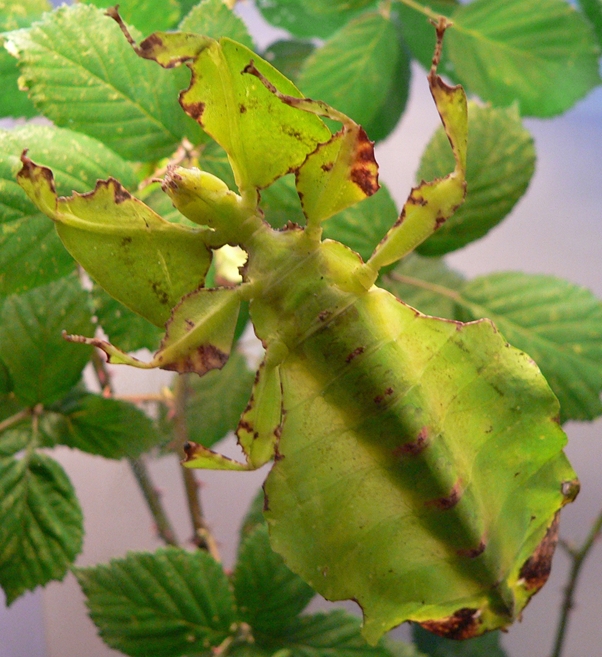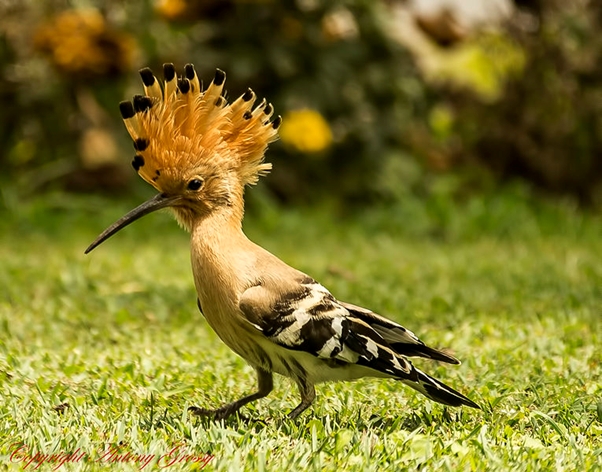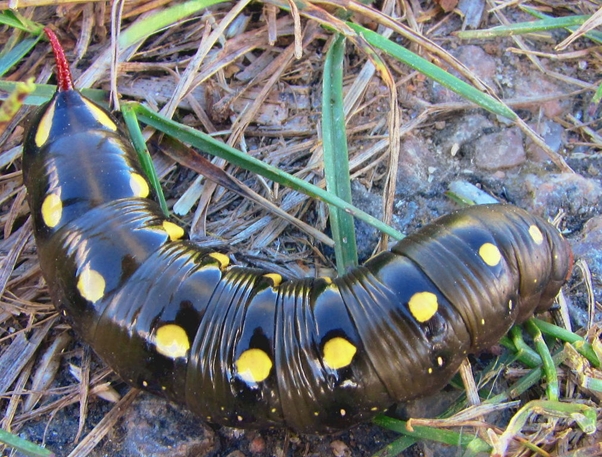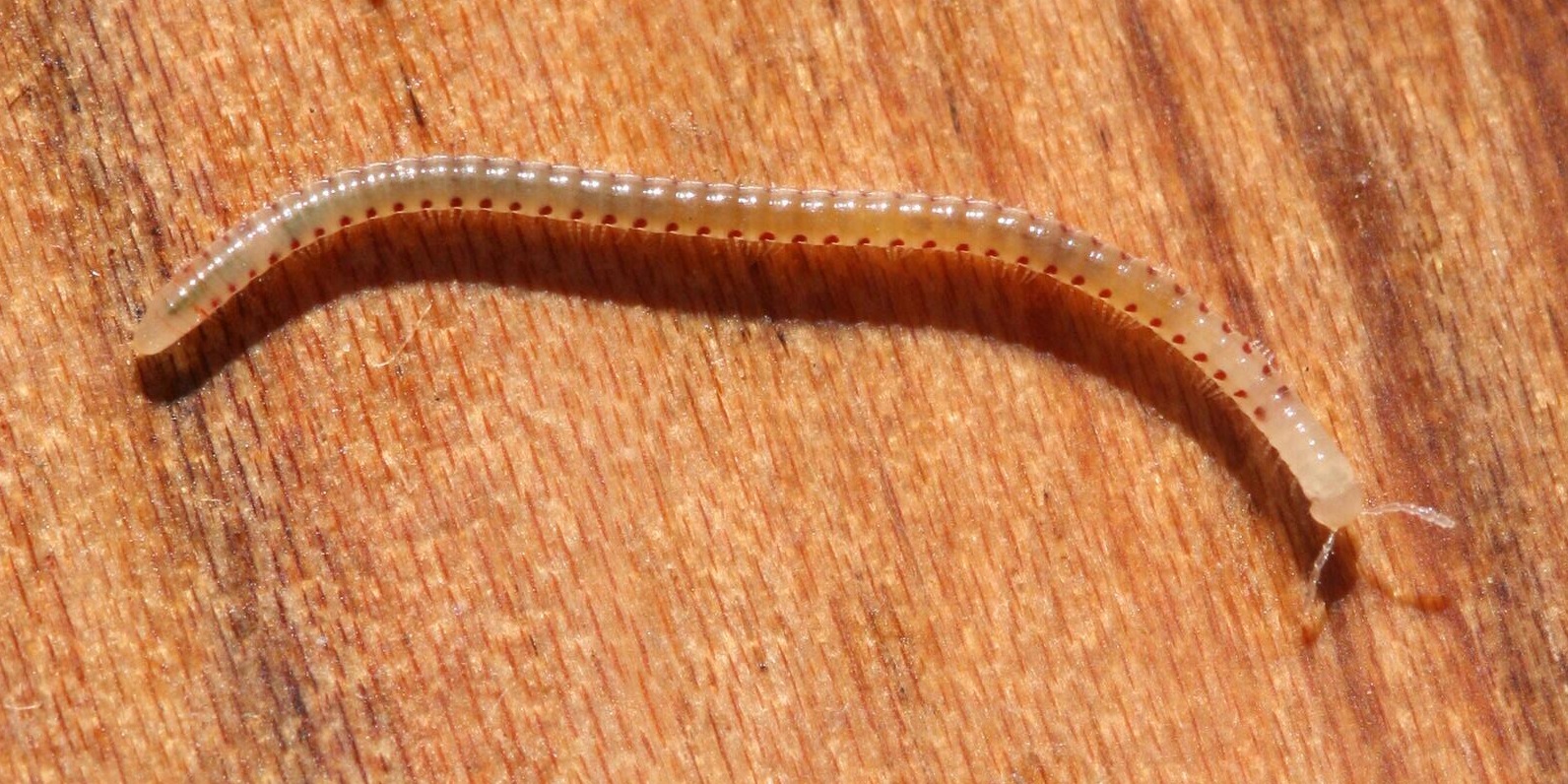
Gray’s Leaf Insect (Phyllium bioculatum). One of these was reared at the Garden in 1854 and was a major visitor attraction for 18 months. Photo: Wikipedia.
Recently I was fortunate to be given a folder of clippings and photocopies from various sources, ranging from two 1935 faunas of Midlothian to extracts from the Garden’s own Guild News-sheets from the 1970s. Through these and other sources, more than fifty historical records of additional species of wildlife recorded at the Edinburgh Garden have been unearthed, that are summarised below. They include an insect (the phasmid Phyllium bioculatum, illustrated above) that, for about a year-and-a-half in the mid-1850s, proved to be as much of an RBGE ‘visitor attraction’ as the Titan Arum (Amorphophallus titanum) has been in recent years. Including the historical records summarised below, the RBGE full wildlife list now stands at just under a thousand. This compares with the 383 species enumerated in my paper in the Garden’s horticultural journal Sibbaldia in 2012, which listed all the birds, mammals, amphibians and invertebrates that I had recorded, or knew to have been recorded, from about 2004 up till that point.
Mammals
Rabbit (Oryctolagus cuniculus) – The late Paddy Woods commented in a 1975 edition of the RBGE Guild news-sheet ‘Nature Notes’ that Rabbits were ‘quite plentiful’. There is also a later record from 1986.
Brown Hare (Lepus europaeus) – In the same article, Woods stated that in 1975 there was ‘definitely one pair, possibly two’ of hares present in the Garden.
Common Hedgehog (Erinaceus europaeus) – Paddy Woods in 1975 commented that there were ‘quite a good number’ of hedgehogs in the Garden and one was also recorded in 1978. None have been seen in recent years; they are a favourite prey of badgers, which may be one reason.
Weasel (Mustela nivalis) – a pair was seen in the Chinese Border and Demonstration Garden in 1975 by Paddy Woods.
Stoat (Mustela erminea) – recorded by Paddy and Jennifer Woods in July 1987.

Eurasian Hoopoe (Upupa epops). Photo Anthony Grossy (Wikimedia Commons). Licenced under the Creative Commons 2.0 Generic licence.
Birds
Barn Owl (Tyto alba) – one was found dead in December 1933 (Nash, The Birds of Midlothian, 1935, p. 172).
Black Redstart (Phoenicurus ochruros) – a pair were seen in the Garden by D.A. Wauchope on 1 May 1924 (Nash, 1935, p. 140).
Common Redstart (Phoenicurus phoenicurus) — there is an old record cited by Nash (1935) and a more recent one of a single bird on 18 September 1964 (J.H. Swan in Scottish Birds 3(4): 204, 1964).
Bonelli’s Warbler (Phylloscopus bonelli) – an unconfirmed record from June 1980, by two European visitors apparently familiar with its song. The RSPB sent someone to try to locate the bird but failed to do so because there was a delay in making the record known. Since that time, Bonelli’s warbler has been split into two distinct species, Western Bonelli’s Warbler Phylloscopus bonelli and Eastern Bonelli’s Warbler P. orientalis. If correct at all, the record is here presumed to apply to Western Bonelli’s Warbler as there are a few more recent records of that species from Lothians and Borders, whereas there are fewer than ten accepted records of Eastern Bonelli’s Warbler from the whole of the UK, none of them from our area.
Budgerigar (Melopsittacus undulatus) – one, presumably an escape from a nearby house, was spotted in the Garden on 23 January 1976 by Douglas McKean. Whether it safely made its way back to the warmer surroundings of its cage or aviary on that winter’s day is not known.
Common Tern (Sterna hirundo) – recorded over the Garden by Nash (1935).
Northern Gannet (Morus bassanus) – no fewer than six Gannets were seen flying over the Garden in September 1988 by Bill Tait.
Greater Scaup (Aythya marila) – an injured bird arrived on 23 November 1925, was nursed back too health, and spent a year on the Pond until it was eventually sent to Edinburgh Zoo as it was damaging the aquatic plants in the pond! A detailed account of this can be found in Nash, Birds of Midlothian 171-172 (1935).
Grey Partridge (Perdix perdix) – one was seen in the Nursery on 10 March 1976. (Guild News Sheet).
Hen Harrier (Circus cyaneus) – one spent a whole week around the Garden between 17 and 24 October 1957 (E. Blake, Edinburgh Bird Bulletin, Dec. 1957. p. 2).
Hoopoe (Upupa epops) – According to an edition of the Guild News Sheet, a group of students (presumably on the DHE – Diploma in Horticultural Education – course) were treated to the sight of a Hoopoe in the Garden on 2 July 1980. As by that time I was working at the Garden, I am very sorry to have missed seeing it myself!
Merlin (Falco columbarius) – there are two records. A female was, sadly, shot in the Garden on 28 November 1933 (Nash, 1935, p. 193) while T. Yeoman saw another one on 13 May 1952 (Edinburgh Bird Bulletin Jun 1952, p. 58).
Pied Flycatcher (Ficedula hypoleuca) – a female was seen in the Garden on 13 May 1964 by J.H. Swan (Scottish Birds 3(3): 148-149, 1964).
Pochard (Aythya farina) – one was reported in December 1977 (RBGE Guild News March 1978).
Tree Pipit (Anthus trivialis) – a migrant bird was in the Garden on 30 April 1964 (J.H. Swan, Scottish Birds 3(3): 149, 1964).
Turtle Dove (Streptopelia turtur) – one was heard ‘purring’ near the West Gate on 27 May 1957 by A.L.F. Smith and his wife (Edinburgh Bird Bulletin 7: 70, 1957).
Wheatear (Oenanthe oenanthe) – a pair was present in the Garden on 18 May 1963 (J.H. Swan in Scottish Birds 2(7): 441, 1963).
Whimbrel (Numenius phaeopus) – Single birds flew over the Garden on migration on 21 and 24 July 1964 (J.H. Swan in Scottish Birds 3(4): 200, 1964).
Common Whitethroat (Curruca communis) – listed as being a “sweet-singing summer visitor” to the Garden by A. McL. May in an article titled “Birds of the Royal Botanic Garden, Edinburgh” published in Journal of the Edinburgh Royal Botanic Garden Guild 1(1): 32-33 (1914).
Willow Tit (Poecile montanus) – Rintoul & Baxter (Vertebrate Fauna of Forth 111, 1935) reported that in October 1889, “Mr Serle” mentioned “watching these tits among the pines in the Botanic Garden in Edinburgh”. In 1889, Willow and Marsh Tit had not been taxonomically separated – that did not take place until 1907. However, Rintoul and Baxter (1935) considered that all Forth records were referable to Willow Tit rather than Marsh Tit. Even in 1935 there were still apparently small numbers of Willow Tits breeding in Midlothian, although it seems to have disappeared from the Botanics by 1914, when May recorded only the three common species (Blue, Coal and Great Tits) in his list of the birds of the Garden mentioned above.
Yellow Wagtail (Motacilla flava) – reported from the Botanic Garden on 18 October 1952 by T. Yeoman (Edinburgh Bird Bulletin Nov. 1952, p. 9).
Other historical bird records, that had already been accounted for in the full Garden wildlife list, have included Short-eared Owl (Asio flammeus: 1963 and 1986), Little Auk (Alle alle: 1935, and again in the 1970s when one flew into the main glasshouse range during a winter storm and killed itself), and Black-crowned Night Heron (Nycticorax nycticorax), of which there was formerly a free-flying colony at Edinburgh Zoo whose individuals often paid visits o the Garden’s pond in the 1950s, 1960s and even as late as the mid-1970s.

Bedstraw Hawk Moth caterpillar (Hyles gallii). Photo C. Nilsson (Wikimedia Commons). Licence CC-BY-SA-3.0.
Butterflies
Small Pearl-bordered Fritillary (Boloria selene) – One of these small butterflies was recorded on 29 August 2004 by Jackie Muscott, one-time BSBI plant recorder for West Lothian.
Moths
Bedstraw Hawkmoth (Hyles gallii) – A caterpillar of this scarce hawkmoth was found in September 1973 by then Keeper of the British Herbarium, Douglas McKean, and its identification confirmed by P. Clinton.
Ants
Little Yellow Ant (Plagiolepis exigua), Penny Ant (Tetramorium bicarinatum), Ghost Ant (Tapinoma melanocephalum), ants Technomyrmex albipes var. brunneipes, Hyponera punctatissima agg. and Strumigerys rogeri – all these six alien ant species were recorded (often under older synonyms) in the RBGE glasshouses of the period by Godfrey (1907). Nomenclature has been updated in accordance with recent research papers.
Beetles
Stockholm Beetle (Trogoderma angustum) – this beetle has probably been present in the RBGE Herbarium since at least 1986 although it was not identified as such until 1998 (Pinniger & Harvey in NatSCA News 12: 2-3, 1999; Shaw in Entomologist’s Gazette 50: 99-102, 1999). It is one of about three different beetle species that have to be controlled because they damage the valuable dried plant specimens in the herbarium.
Phasmids (‘Stick insects’ and allies)
Gray’s Leaf Insect (Phyllium bioculatum) – This is one of the earliest records of an insect in the Edinburgh glasshouses, where one was reared from an egg introduced from eastern India at the third attempt by Emma Blackwood (née Moore), wife of Major William Blackwood, formerly of the Honourable East India Company Service and then editor of Blackwood’s Magazine, the famous Edinburgh literary magazine. The insect thrived in the glasshouse for 18 months between June 1854 and 1855, thanks to the then curator of the Garden, James McNab, allowing its complete metamorphosis to be documented for the first time. It was on display to the public four days a week and proved to be an attraction that drew “a great number of visitors”. A full account was given by Andrew Murray in The Edinburgh New Philosophical Journal, new series, 3: 96-111 (1856).
Molluscs
Hawaiia minuscula – this was one of Godfrey’s finds in the glasshouses at the beginning of the 20th Century (Godfrey, 1907).
Balkan Threeband Slug (Ambigolimax nyctelius) – recorded in 1934 by A.R. Waterston.
Pseudosuccinea columella – this mollusc was found in our glasshouses in 1948 by the Dutch botanist A.D.J. Meeuse and documented by Meeuse & Hubert in Basteria 13(1-3): 1-44 (1949).
Woodlice
Rosy Woodlouse (Androniscus dentiger) – recorded in 1987 by C.P. Rawcliffe as part of a systematic effort to collect and identify woodlice, millipedes and centipedes in Edinburgh and the Lothians, that yielded several new records, both for the Garden and in one or two cases Scotland and/or the U.K.
Cardioniscus stebbingi and Styloniscus mauritiensis – two alien woodlice found in the glasshouses by C.P. Rawcliffe in 1986. The record of Styloniscus mauritiensis was the first for the U.K.
Centipedes
Lithobius lapidicola – Found at the Garden on 20 May 1986 by C.P. Rawcliffe, the first confirmed U.K. record of this species although there had been one or two earlier reports that turned out to be misidentifications.
Millipedes
Spotted Snake Millipede (Blaniulus guttulatus) – First found by C.P. Rawcliffe in May 1986 in the Peat House and again by him on 1 June 1987 in the Fern House. Re-found in the glasshouses by Gordon Corbet in 1998.
Choneiulus palmatus, Cylindroiulus britannicus, Cy. latestriatus, Cy. salicivorus, Cy. vulnerarius, Nopiulus kochii – these six millipedes were all recorded by C.P. Rawcliffe in various public display glasshouses between 1986 and 1987; several were subsequently re-found there by Gordon Corbet.
Oxidus gracilis, Ophyiulus pilosus and Proteroiulus fuscus – another three millipedes recorded at the Garden by C.P. Rawcliffe. In these cases, the records do not state whether they were also in the glasshouses, or outside in the Garden.

